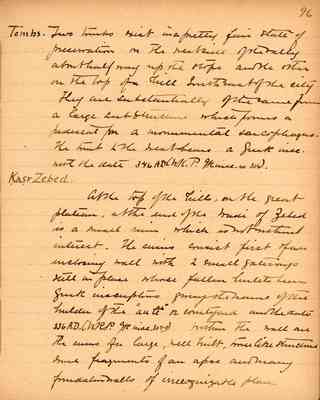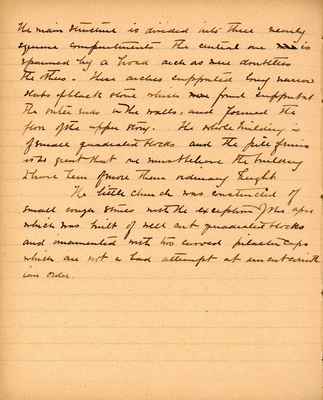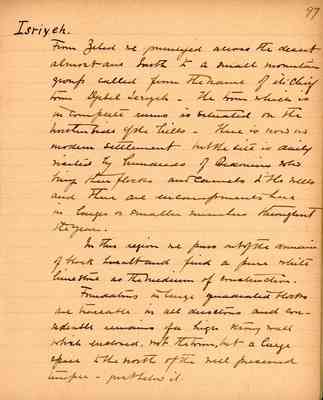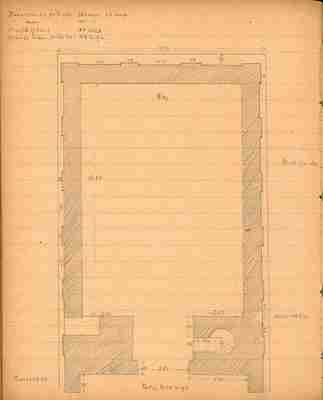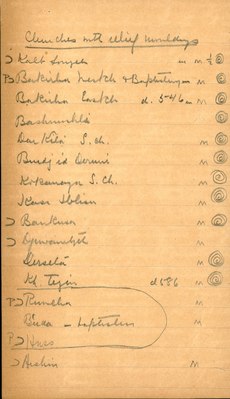Pages
BSY_FB_16-96
96
Tombs. Two tombs exist in a prety fair state of preservation on the west side of the valley about half way up the slope and the other on the top of the hill southeast of the city. They are substantially of the same form a large substructure which forms a pedestal for a monumental sarcophagus. The tomb to the west bears a Greek insc. with the date 346 A.D. (W.K.P. GK insc no. 306)
Ḳaṣr Zebed At the top of the hills, on the great plateau, at the end of the wadi of Zebed is a small ruin which is not without interest. The ruins consist first of an enclosing wall with two small gateways still in place whose fallen lintels bear Greek inscriptions giving the name of the builder of the "aute" or courtyard and the date 336 A.D. (W.R.P. GR insc 309-11) Within the wall are the ruins of a large, well built, tower like structure some fragments of an apse and many foundation walls of irrecognizable plan.
BSY_FB_16-96a
The main structure is divided into three nearly square compartments. The central one is spanned by a broad arch as were doubtless the others. These arches supported long narrow slabs of black stone which found support at the outer ends in the walls, and formed the floor of the upper story. The whole building is of small quadrated blocks and the pile of ruins is so great that we must believe the building to have been of more than ordinary height.
The little church was constructed of small rough stones with the exception of the apse which was built of well cut quadrated blocks and ornamented with two carved pilaster caps which are not a bad attempt at uncut Corinthian order.
BSY_FB_16-97
97
From Ḳaṣr Zebed we purveyed across the desert almost due South to a small mountain group called from the name of its chief town Djebel Isriyeh. The town which is in complete ruins is situated on the northern face of the hills. There is now no modern settlement but the site is daily visited by hundreds of Bedouins who bring their flocks and camels to the wells and there are encampments here in larger or smaller numbers throughout the year.
In this region we pass out of the domain of black basalt and find a pure white limestone as the medium of construction.
Foundations in large quadrated blocks are traceable in all directions and considerable remains of a high strong wall which enclosed, not the town, but a large space to the north of the well preserved temple - just below it.
BSY_FB_16-97a
Scale 1cm = 1m
BSY_FB_16-97ainsert1
Churches with relief mouldings
Notes [best guesses]
Ḳalb Lauzeh|Ḳalb Lauzi Bāḳirḥā West ch & Bapistry Bāḳirḥā East Ch Bashmishli Dier Kila S.C. Burdj id Der...i Kо̄kanâya S. Ch. Kasr ... Bānḳûsa Djūwanîyi Dersêta Kh Tyin Ruwêḥa|Ruwêḥā Baʿuda Ḥâṣṣ Hishim
